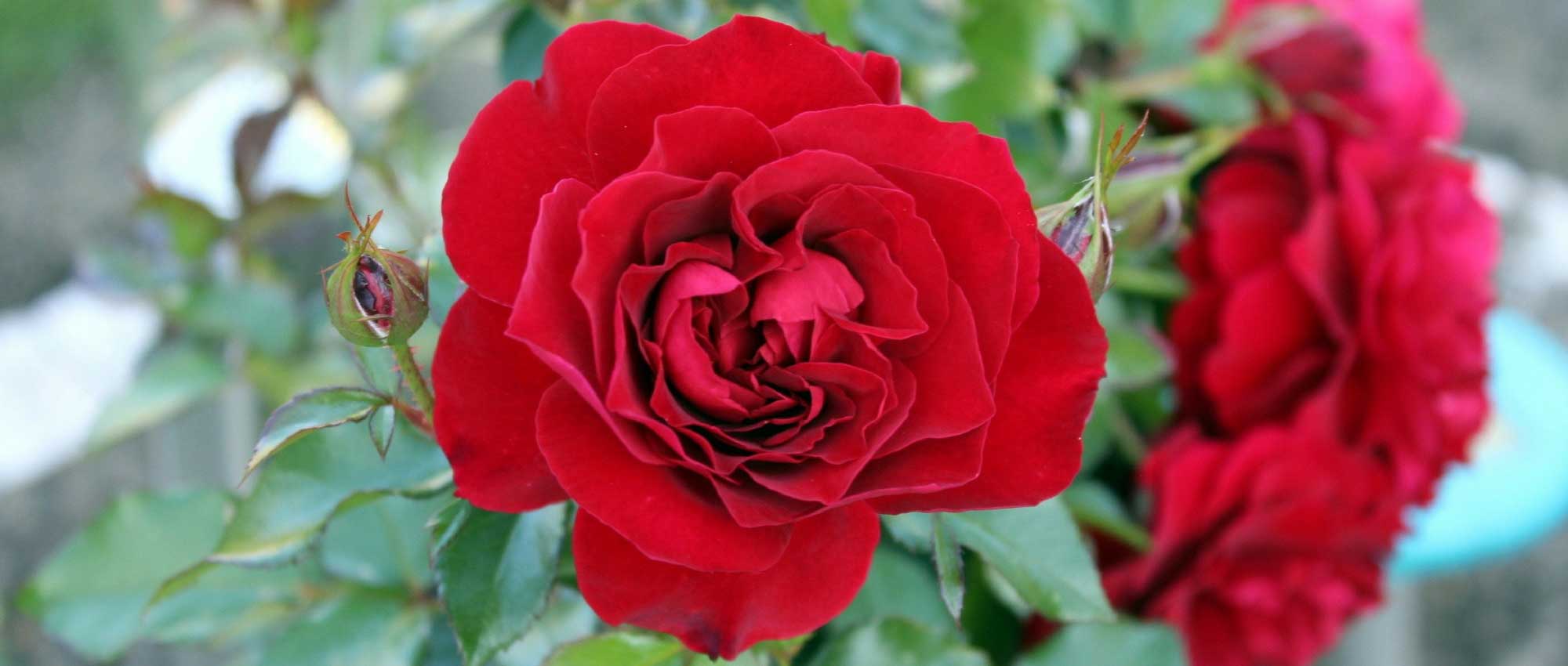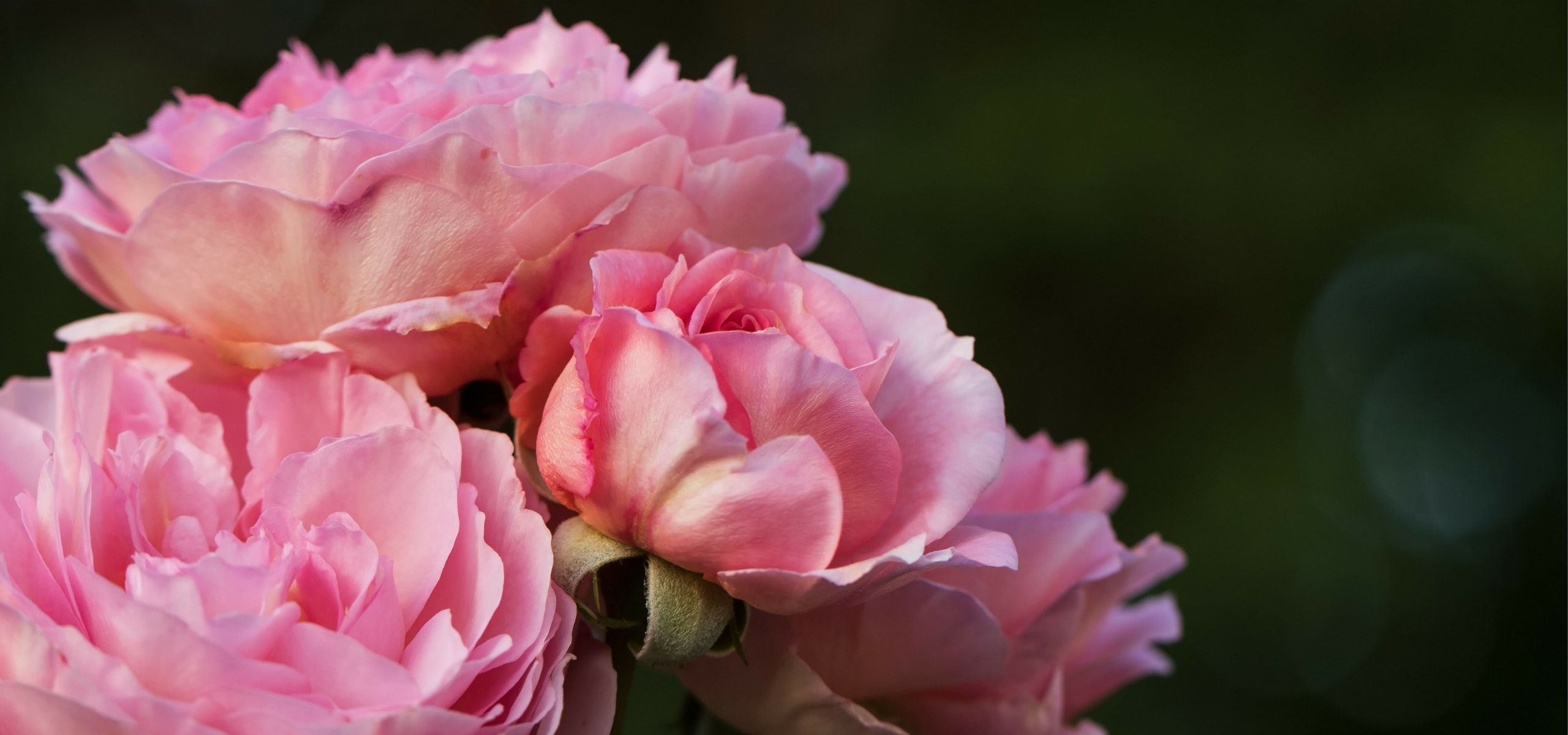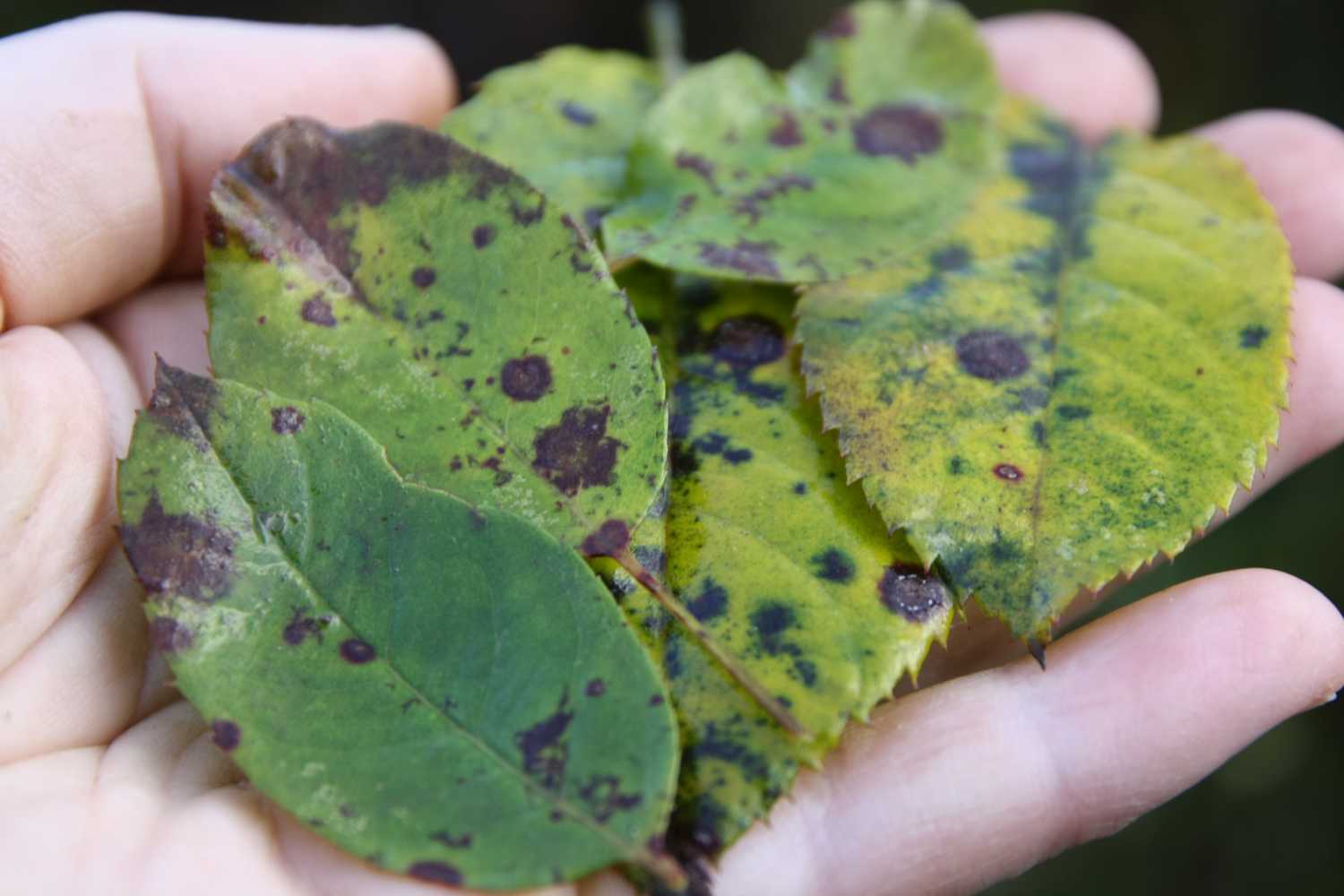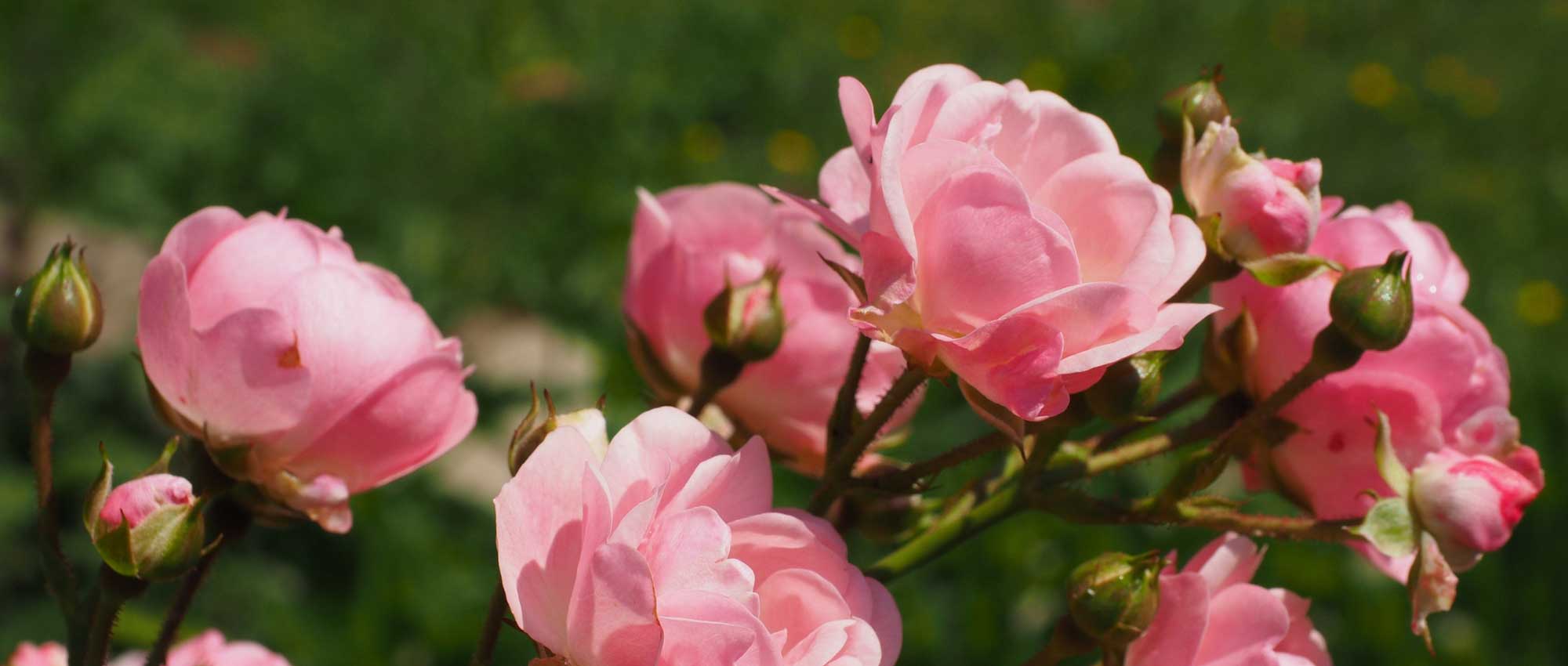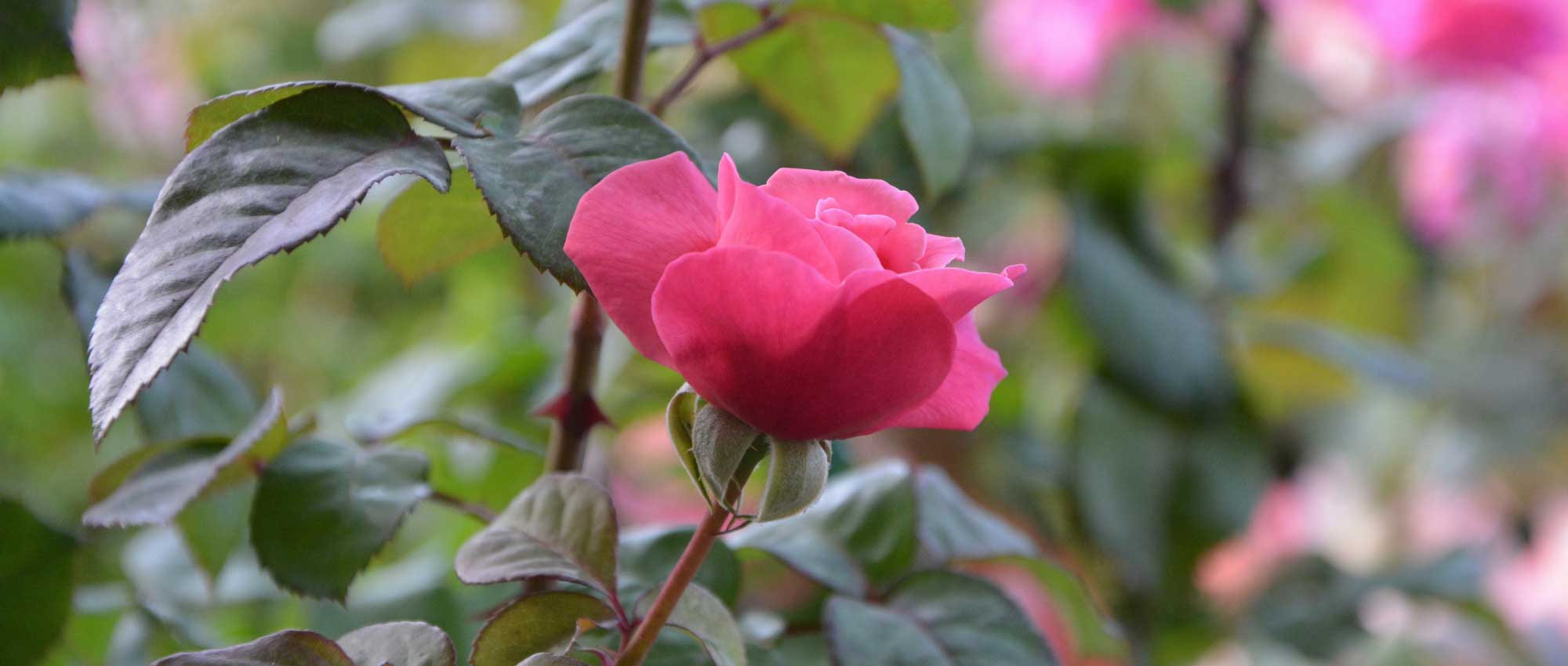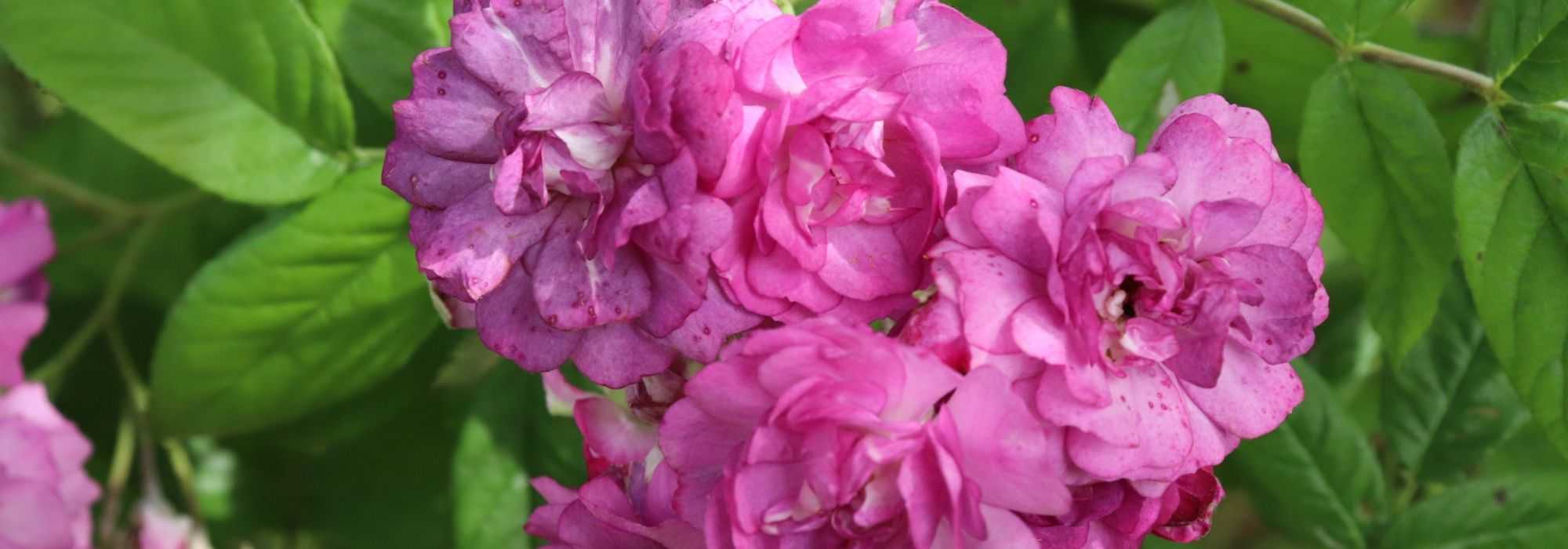

Rosa x moschata 'VEL20mitach' Ma Fille Sara® - Rosier musqué Ma Fille Sara
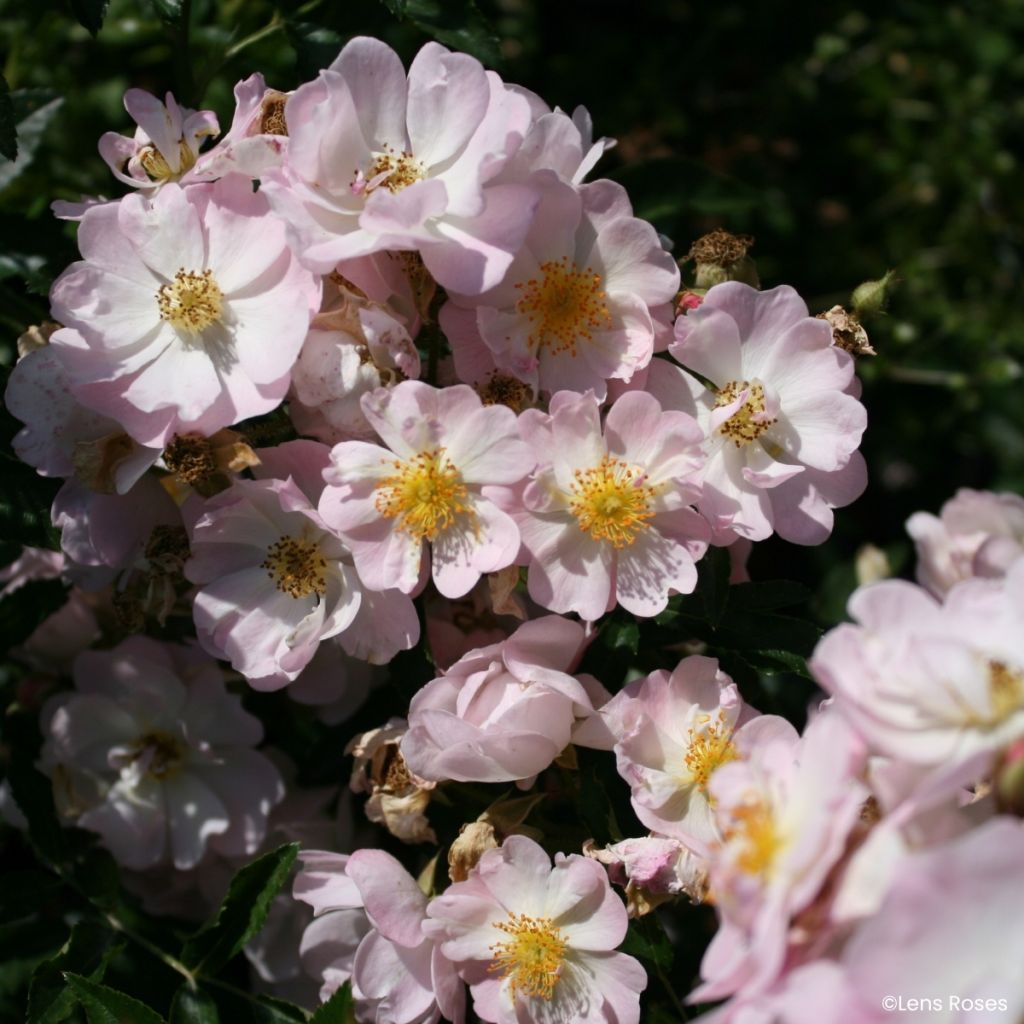

Rosa x moschata 'VEL20mitach' Ma Fille Sara® - Rosier musqué Ma Fille Sara


Rosa x moschata 'VEL20mitach' Ma Fille Sara® - Rosier musqué Ma Fille Sara
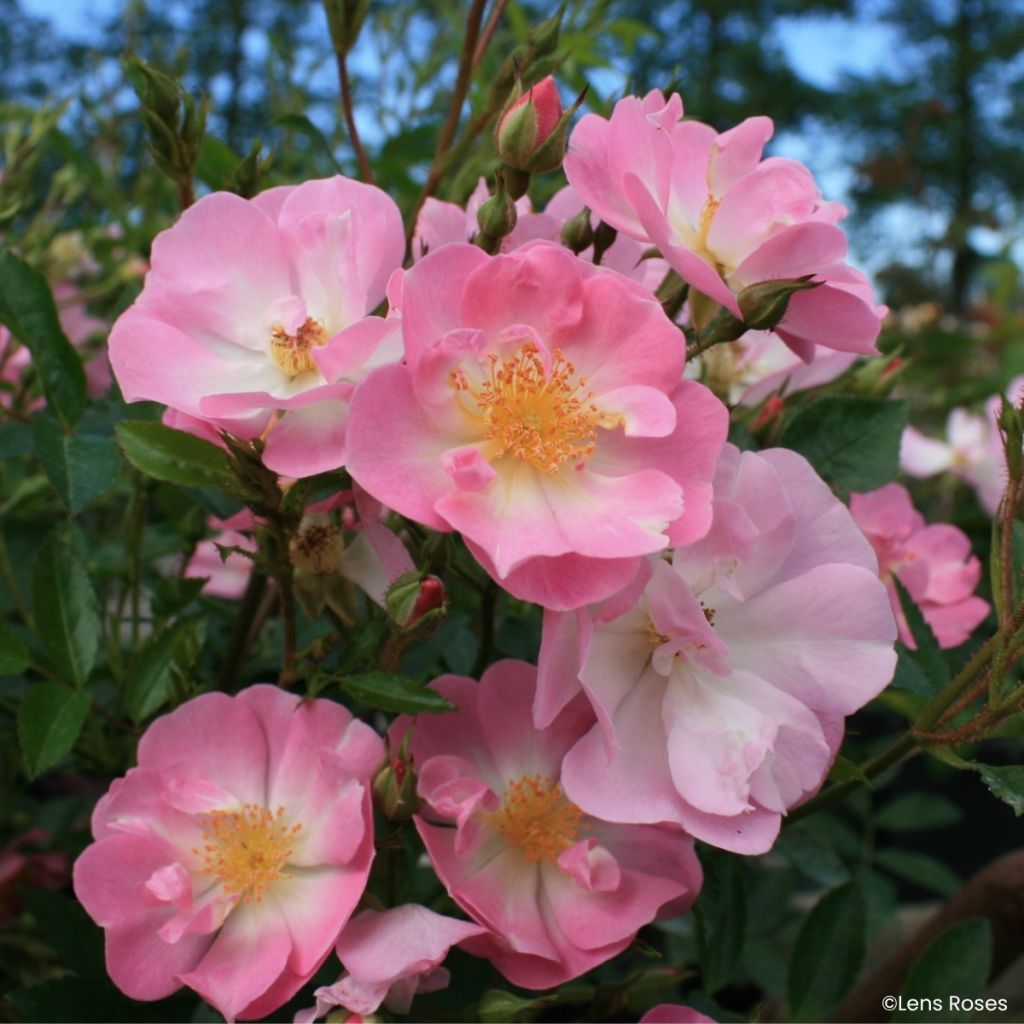

Rosa x moschata 'VEL20mitach' Ma Fille Sara® - Rosier musqué Ma Fille Sara
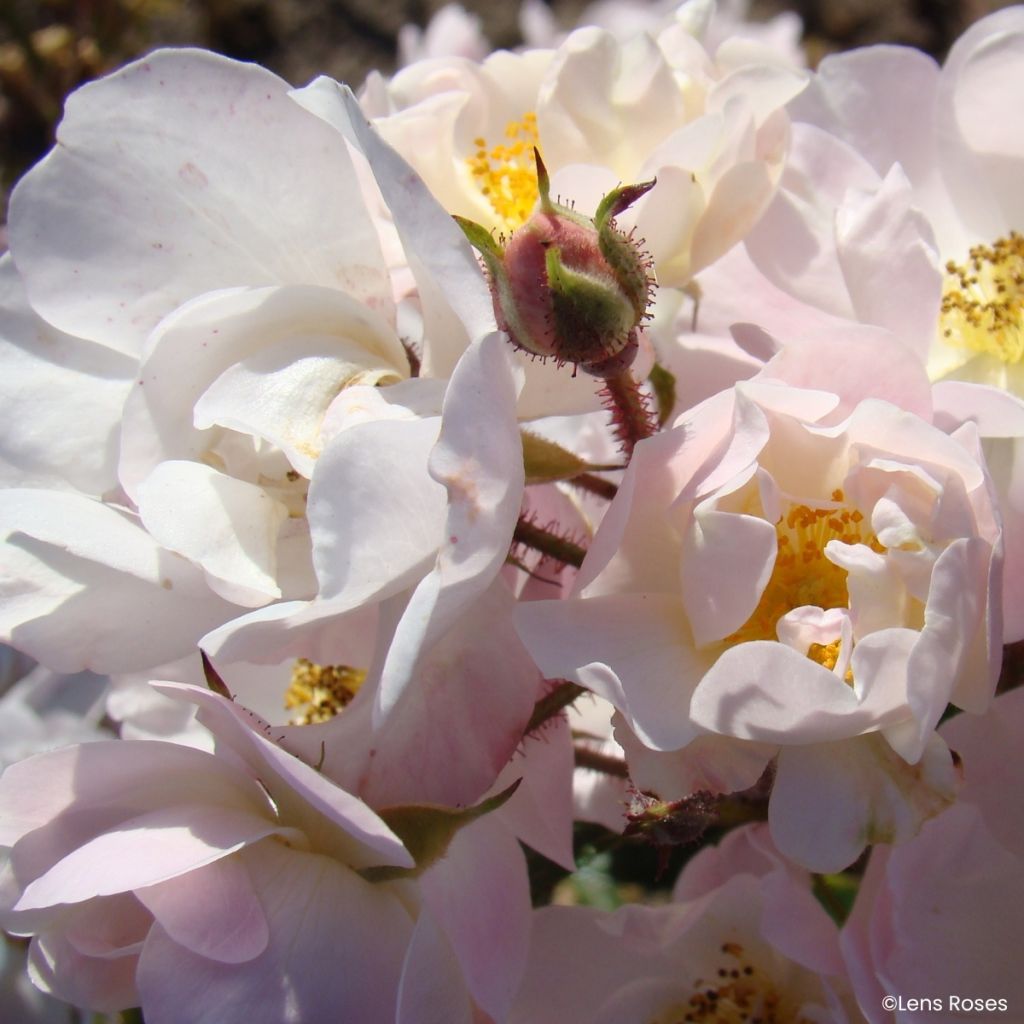

Rosa x moschata 'VEL20mitach' Ma Fille Sara® - Rosier musqué Ma Fille Sara


Rosa x moschata 'VEL20mitach' Ma Fille Sara® - Rosier musqué Ma Fille Sara
Rosa x moschata Ma Fille Sara - Groundcover Rose
Rosa x moschata 'VEL20mitach' Ma Fille Sara®
Musk Rose, Groundcover Rose
Special offer!
Receive a €20 voucher for any order over €90 (excluding delivery costs, credit notes, and plastic-free options)!
1- Add your favorite plants to your cart.
2- Once you have reached €90, confirm your order (you can even choose the delivery date!).
3- As soon as your order is shipped, you will receive an email containing your voucher code, valid for 3 months (90 days).
Your voucher is unique and can only be used once, for any order with a minimum value of €20, excluding delivery costs.
Can be combined with other current offers, non-divisible and non-refundable.
Home or relay delivery (depending on size and destination)
Schedule delivery date,
and select date in basket
We guarantee the quality of our plants for a full growing cycle, and will replace at our expense any plant that fails to recover under normal climatic and planting conditions.
Description
The 'Ma Fille Sara®' rose is a hybrid miniature variety that carries the genes of the musk rose. It charms with its large pyramidal inflorescences in clusters, its pastel pink colouring fading to white, and its endless flowering. This is a small, slightly trailing plant that works wonders in planters and flowerbed borders. Its lightly scented flowering is offered to bees and its small foliage is very healthy.
Belonging to the Rosaceae family, 'Ma Fille Sara' is part of the hybrid moschata group. Its cultivar code is 'VEL20mitach'. It was developed by the breeder Lens Roses (Belgium), directed by Ann Velle-Boudolf and Rudy Velle; its market introduction dates back from 2024.
This cultivar has already been distinguished in several international competitions: Lyon (1st prize miniatures, 2022), Nyon (silver medal, 2022), Paris-Bagatelle (certificate, 2022), Hradec Králové (1st prize miniatures, 2023), Premia Roma (1st prize cut flower arrangement roses, 2024) and a Pollinator Award at Rochfords (2025).
This 'Ma Fille Sara' rosebush forms a very compact small bush, with flexible and slightly trailing branches. It reaches 30 to 40 cm in height with a 45 to 50 cm spread. Its growth is rapid for a "miniature". Its foliage, of a shiny dark green, is not very susceptible to foliar diseases. This variety bears small semi-double flowers, approximately 4 cm in diameter, in open cups, adorned with a large bouquet of yellow stamens; the corollas open a very light pink with a white centre then fade to pure white. The flowering is continuous from June to November, it takes the form of large, slightly scented pyramidal clusters. In autumn, small spherical hips form, appreciated by birds. This rose is generally offered non-grafted, on its own roots, which gives it good robustness. Announced hardiness: at least −15 °C.
Use the 'Ma Fille Sara' miniature rose at the edge of a flowerbed, in a ribbon along a path, or in a pot on a balcony. Plant it in ordinary, but well-drained soil, in sun or partial shade, and mix it with perennials such as dwarf asters, Erigeron karvinskianus and Pennisetum alopecuroides ‘Little Bunny’. You can also pair it with other miniature roses such as 'Bees Paradise Pink', 'Bordure Nacrée' and 'Bridal Meillandina' in a border.
Rosa x moschata Ma Fille Sara - Groundcover Rose in pictures
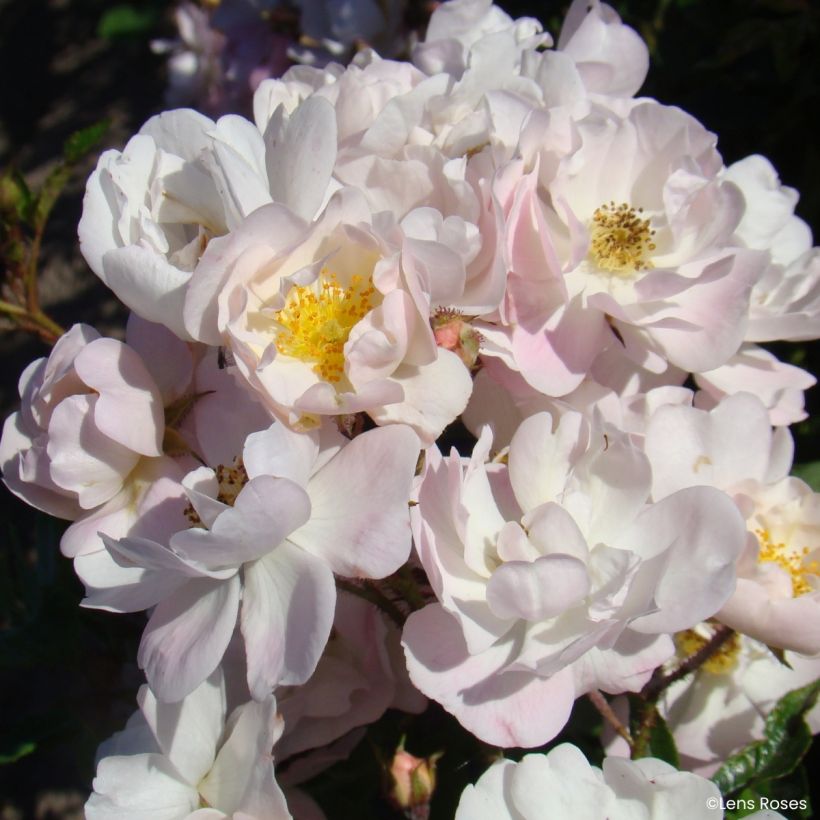

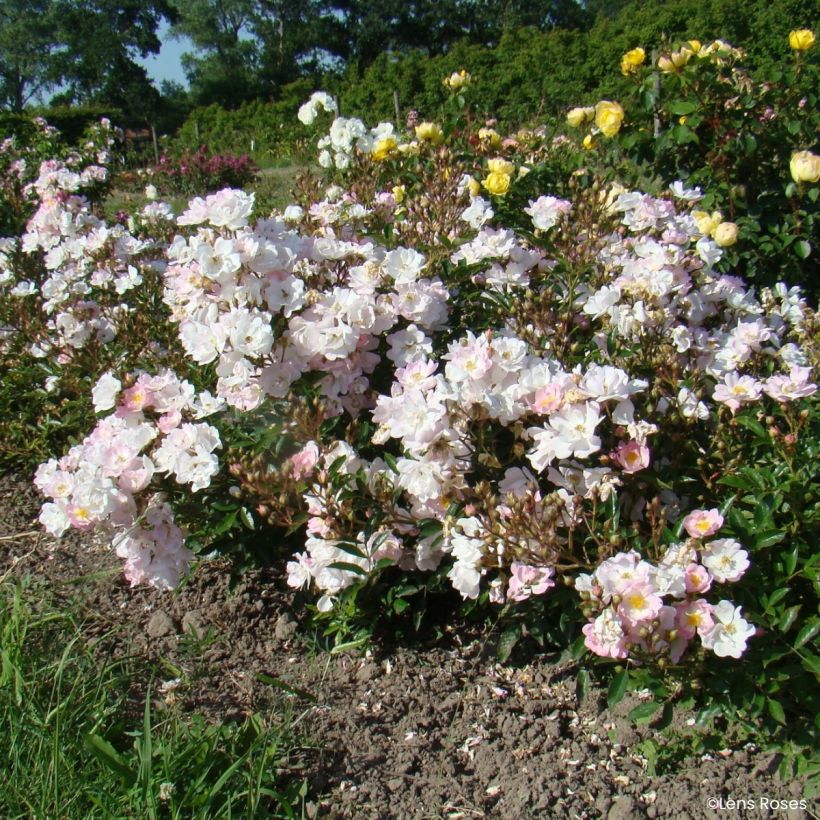

Planting and care
To plant your 'Ma Fille Sara' rosebush, work your soil to a depth of 25cm, breaking up the soil well and placing a base fertiliser such as dried blood or dehydrated horn at the bottom of the planting hole. Position your young plant after removing it from its pot, covering the top of the root ball with 3cm of soil, backfill and water thoroughly to eliminate air pockets. During dry weather, water regularly for a few weeks to encourage root establishment. Also remember to feed your rose with special rose fertiliser which stimulates plant flowering.
Roses often become spotted or unsightly by late summer, but this isn't a problem for their development. These spots aren't harmful to the rose - it's a natural phenomenon. Follow all our advice for dealing with this and read our article: Help: I've got spots on my roses.
Planting & care advice
This item has not been reviewed yet - be the first to leave a review about it.
Haven't found what you were looking for?
Hardiness is the lowest winter temperature a plant can endure without suffering serious damage or even dying. However, hardiness is affected by location (a sheltered area, such as a patio), protection (winter cover) and soil type (hardiness is improved by well-drained soil).

Photo Sharing Terms & Conditions
In order to encourage gardeners to interact and share their experiences, Promesse de fleurs offers various media enabling content to be uploaded onto its Site - in particular via the ‘Photo sharing’ module.
The User agrees to refrain from:
- Posting any content that is illegal, prejudicial, insulting, racist, inciteful to hatred, revisionist, contrary to public decency, that infringes on privacy or on the privacy rights of third parties, in particular the publicity rights of persons and goods, intellectual property rights, or the right to privacy.
- Submitting content on behalf of a third party;
- Impersonate the identity of a third party and/or publish any personal information about a third party;
In general, the User undertakes to refrain from any unethical behaviour.
All Content (in particular text, comments, files, images, photos, videos, creative works, etc.), which may be subject to property or intellectual property rights, image or other private rights, shall remain the property of the User, subject to the limited rights granted by the terms of the licence granted by Promesse de fleurs as stated below. Users are at liberty to publish or not to publish such Content on the Site, notably via the ‘Photo Sharing’ facility, and accept that this Content shall be made public and freely accessible, notably on the Internet.
Users further acknowledge, undertake to have ,and guarantee that they hold all necessary rights and permissions to publish such material on the Site, in particular with regard to the legislation in force pertaining to any privacy, property, intellectual property, image, or contractual rights, or rights of any other nature. By publishing such Content on the Site, Users acknowledge accepting full liability as publishers of the Content within the meaning of the law, and grant Promesse de fleurs, free of charge, an inclusive, worldwide licence for the said Content for the entire duration of its publication, including all reproduction, representation, up/downloading, displaying, performing, transmission, and storage rights.
Users also grant permission for their name to be linked to the Content and accept that this link may not always be made available.
By engaging in posting material, Users consent to their Content becoming automatically accessible on the Internet, in particular on other sites and/or blogs and/or web pages of the Promesse de fleurs site, including in particular social pages and the Promesse de fleurs catalogue.
Users may secure the removal of entrusted content free of charge by issuing a simple request via our contact form.
The flowering period indicated on our website applies to countries and regions located in USDA zone 8 (France, the United Kingdom, Ireland, the Netherlands, etc.)
It will vary according to where you live:
- In zones 9 to 10 (Italy, Spain, Greece, etc.), flowering will occur about 2 to 4 weeks earlier.
- In zones 6 to 7 (Germany, Poland, Slovenia, and lower mountainous regions), flowering will be delayed by 2 to 3 weeks.
- In zone 5 (Central Europe, Scandinavia), blooming will be delayed by 3 to 5 weeks.
In temperate climates, pruning of spring-flowering shrubs (forsythia, spireas, etc.) should be done just after flowering.
Pruning of summer-flowering shrubs (Indian Lilac, Perovskia, etc.) can be done in winter or spring.
In cold regions as well as with frost-sensitive plants, avoid pruning too early when severe frosts may still occur.
The planting period indicated on our website applies to countries and regions located in USDA zone 8 (France, United Kingdom, Ireland, Netherlands).
It will vary according to where you live:
- In Mediterranean zones (Marseille, Madrid, Milan, etc.), autumn and winter are the best planting periods.
- In continental zones (Strasbourg, Munich, Vienna, etc.), delay planting by 2 to 3 weeks in spring and bring it forward by 2 to 4 weeks in autumn.
- In mountainous regions (the Alps, Pyrenees, Carpathians, etc.), it is best to plant in late spring (May-June) or late summer (August-September).
The harvesting period indicated on our website applies to countries and regions in USDA zone 8 (France, England, Ireland, the Netherlands).
In colder areas (Scandinavia, Poland, Austria...) fruit and vegetable harvests are likely to be delayed by 3-4 weeks.
In warmer areas (Italy, Spain, Greece, etc.), harvesting will probably take place earlier, depending on weather conditions.
The sowing periods indicated on our website apply to countries and regions within USDA Zone 8 (France, UK, Ireland, Netherlands).
In colder areas (Scandinavia, Poland, Austria...), delay any outdoor sowing by 3-4 weeks, or sow under glass.
In warmer climes (Italy, Spain, Greece, etc.), bring outdoor sowing forward by a few weeks.






























